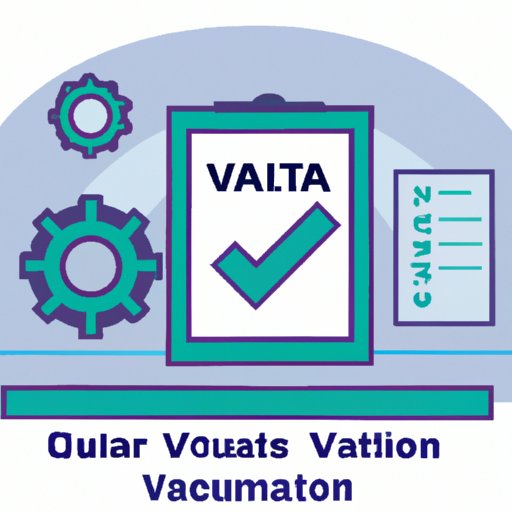Introduction
Data validation is the process of ensuring that data is accurate, complete, and valid. It involves verifying that data meets certain criteria and standards before it can be used for analysis or decision making. Automated data validation is the use of software tools and processes to automate the data validation process. This type of data validation is becoming increasingly popular due to its ability to speed up the data validation process and reduce errors.
Why Automate Data Validation?
Automating data validation has many benefits. By automating the validation process, organizations can save time and money by reducing manual labor and eliminating potential errors. Automation also increases accuracy by allowing organizations to quickly check data against predefined rules and criteria. Additionally, automated data validation can help organizations maintain consistent data quality standards across their databases and other data sources.
Step-by-Step Guide for Automating Data Validation
Automating data validation can seem daunting, but with a few steps, it can be done quickly and easily. Here is a step-by-step guide for automating data validation:
1. Selecting the Right Automation Tool
The first step in automating data validation is selecting the right automation tool. There are a variety of software tools available, so it’s important to select one that best fits the organization’s needs. Factors to consider when selecting an automation tool include ease of use, cost, compatibility with existing systems, and scalability.
2. Designing and Implementing an Automated Validation Process
Once the right automation tool has been selected, the next step is to design and implement an automated validation process. This process should include defining data rules and criteria, setting up automated tests, and scheduling regular data validation reviews. It’s important to ensure that the automated validation process is regularly monitored and updated as needed in order to ensure accuracy.
3. Testing the Automated Validation Process
It’s important to test the automated validation process to make sure it is working correctly. This can be done by running test scenarios and checking the results against expected outcomes. Once the automated validation process has been tested and confirmed to be working correctly, it can be implemented in the organization.

Benefits of Automating Data Validation
Automating data validation can bring many benefits to organizations. These benefits include increased efficiency and accuracy, reduced time to validate data, and improved data quality.
1. Increased Efficiency and Accuracy
By automating the data validation process, organizations can save time and money by reducing manual labor and eliminating potential errors. Automation also increases accuracy by allowing organizations to quickly check data against predefined rules and criteria.
2. Reduced Time to Validate Data
Automating data validation reduces the amount of time it takes to validate data. This allows organizations to quickly detect and address any issues with data accuracy or completeness.
3. Improved Data Quality
Automating data validation helps organizations maintain consistent data quality standards across their databases and other data sources. This ensures that all data is accurate, complete, and valid.

Best Practices for Automating Data Validation
In order to successfully automate data validation, there are several best practices that organizations should follow. These include identifying data sources, defining data rules and criteria, and scheduling regular data validation reviews.
1. Identify Data Sources
Organizations should identify all data sources that need to be validated. This includes both internal and external sources such as databases, spreadsheets, files, etc.
2. Define Data Rules and Criteria
Organizations should define data rules and criteria for each data source. This will ensure that data is validated according to the same set of standards across all data sources.
3. Schedule Regular Data Validation Reviews
Organizations should schedule regular data validation reviews to ensure that data is accurate and up to date. This can be done by running automated tests or manually reviewing data periodically.
Common Challenges in Automating Data Validation and How to Overcome Them
There are several common challenges associated with automating data validation. These include data inaccuracies, limited resources, and lack of standardization. Here are some tips for overcoming these challenges:
1. Data Inaccuracies
Data inaccuracies can occur when data is not entered correctly or is not updated regularly. To combat this, organizations should ensure that data is entered accurately and that any changes are tracked and updated regularly.
2. Limited Resources
Organizations may have limited resources when it comes to automating data validation. To address this, organizations should prioritize which data sources should be automated first and focus on automating those.
3. Lack of Standardization
Lack of standardization can lead to inconsistencies in data validation across different data sources. To avoid this, organizations should create standardized data validation processes and ensure that all data sources adhere to the same standards.
Conclusion
Automating data validation can be a beneficial and cost-effective way for organizations to ensure their data is accurate, complete, and valid. By following the steps outlined above, organizations can successfully automate their data validation process and reap the benefits of increased efficiency and accuracy, reduced time to validate data, and improved data quality.
(Note: Is this article not meeting your expectations? Do you have knowledge or insights to share? Unlock new opportunities and expand your reach by joining our authors team. Click Registration to join us and share your expertise with our readers.)
